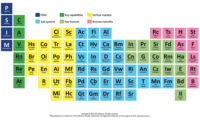At that time I owned and operated a central station alarm company in Birmingham, Ala. I had moved back to my hometown in the early 1970s. Birmingham is a great place to live and raise a family.
I started in the alarm business in 1974 at the age of 28, and with the help of some good people, we built up a nice size alarm company for our area. I was interested in significant industry issues, so being part of CSAA was important.
My wife, Mary Ruth, was with me on this trip. Washington is a favorite city of ours, and we always look forward to our visits. While riding up the L’Enfant Plaza Hotel elevator to the reception room where we would meet Steve Doyle, I’m sure my mind wandered a bit – maybe even for a brief moment I thought about when I was in Vietnam some 20 years before. This would not have been unusual. I think most Vietnam veterans, consciously and subconsciously, carry such memories with them throughout their lives. I could never have predicted what I was about to learn that would take me back to a very vivid and tragic memory that I had about my experiences in Vietnam.

Trading Places
Steve Doyle was looking forward to the final stages of his interview process that evening. Although the job was not officially his yet, he knew that meeting the CSAA directors was one of the final steps. The CSAA job would be a good step in his professional career. Remaining in Washington D.C. was also important. It was here that Steve had met Tima, and married in 1980. Born in South Africa to Portuguese parents, she had a promising career with the U.S. State Department as a linguistics specialist.Steve would soon meet the CSAA director from Alabama and that would remind him of four of the best years of his life, when he attended the 135-year-old Spring Hill College in Mobile, Ala. This young man from Washington D.C. had decided to go south in 1964 to this small co-ed college located on a beautiful 450-acre campus in Mobile.
Almost from the moment he arrived, Steve knew that this was the right place for him. He enjoyed both his studies and an active social life. He worked at the local airport and got his pilot’s license. To Steve, this area became more than just a place where he attended college. It was a community where he wanted to stay after graduation and find a job.
There was only one problem – Vietnam and the Draft. It was 1968 and the year started off with the Tet Offensive and the Battle for Khe Sanh. U.S. troops in Vietnam hit an all-time high of 500,000 that year. By 1968, Vietnam had become the longest war in U.S. history. At that time every able-bodied young man 18 years and older (who was no longer in high school or college) was certain to be drafted into the Army, unless he volunteered for military service. Steve applied for the Marines Officer Candidate School and was accepted. So in the latter part of 1968, he headed to OCS with dreams of getting into aviation.
At the same time in 1964 that Steve headed south to college, I went north to the Univ. of Virginia. At the end of our senior year in 1968, Mary Ruth and I were married. We moved to Tuscaloosa, Ala., where I completed a 12-month MBA program while she taught school. I had joined the Army R.O.T.C. program while at Virginia and this required two years of active duty after completion of my education. So in January 1970, we packed the car and headed to Washington D.C. for my first U.S. Army assignment at Fort Belvoir.
At the time, President Nixon was trying to gradually reduce the role of U.S. forces in Vietnam with the South Vietnamese taking over more responsibility. The new Draft lottery system began that year. There were still about 400,000 U.S. troops in Vietnam at the beginning of 1970, so many replacements were needed. A young Army second lieutenant was virtually certain to receive orders to Vietnam at that time, and I received mine in Sept. 1970.
After completing OCS in 1969, Steve began his lengthy flight training to become a Marine helicopter pilot. After completion of flight school, he went to Santa Ana, Calif., where he became experienced in a specific type of helicopter. In Dec. 1970, First Lieutenant Stephen Paul Doyle was on his way to Vietnam, assigned to Heavy Marine Helicopter Squadron (HMH) 463 at Marble Mountain Air Facility.
Steve’s squadron was part of Marine Air Group 16, which had four types of aircraft. Steve flew the heavy-duty, multi-role CH-53, capable of flying 200 miles per hour, in bad weather, at night, with long-range and heavy-load capacities. On almost a daily basis, Steve flew a variety of missions: troop insertions, re-supply, search and rescue, medical evacuations, and even provided direction of naval gunfire from offshore battleships. When he arrived, his squadron had 24 aircraft. After 10 months, four could still fly! It would be accurate to say that his days were charged with adrenalin and fraught with danger.
I arrived in Vietnam in mid-Sept. 1970. Two weeks prior to departure we learned that Mary Ruth was pregnant with our first child – a pretty good going away present! My assignment was to the 7th PSYOPS (Psychological Operations) Battalion, a small unit with operations in Military Region 1, which covered the five provinces below the DMZ. We worked with units of the Army Infantry, Marines and South Vietnamese Army, providing PSYOPS support such as leaflet drops from the air, broadcasts (from both the air and ground), team missions into villages, and a variety of other activities aimed at demoralizing the enemy and influencing the local populace. I was in charge of our Air Operations and in early March 1971, my unit joined with a combat engineer battalion to share a compound located near a place called Marble Mountain.
In Vietnam, the sound and sight of helicopters in the air was commonplace. Unless it was coming for you, special attention was not generally paid. I don’t know why I looked up at this particular helicopter, but on a sunny, hot day in April I looked directly at a low-flying, twin rotor helicopter not too far away, which, a few seconds later, exploded in mid-air! There was a huge fireball and then I saw the rear rotor blade slicing into the body of the aircraft. It was like an egg being cracked in two. This big helicopter broke open in the middle, with both ends seeming to momentarily rise up, before descending about 100 feet in a ball of fire into the surf of the South China Sea.
Several of our men were near the gate that separated us from the downed aircraft. They reached the helicopter within minutes. It was only 100 feet or so offshore, and a lifeline of soldiers quickly formed to pull men out of the wreckage and pass them to shore. Of the four or five men on board and brought to shore, two were dead. There was a short period of relative calm and I remember, very clearly, looking at this young lieutenant, lying dead on this far-away beach. The first thought that came to my mind was that if only his family could be with him at this moment.
Within a short time, several Med Evac (medical evacuation) helicopters appeared and the frenzy of activity continued as these aircraft descended on this small beach area, whipping sand through the air while the casualties were loaded. The Med Evacs landed and were gone within a couple of minutes.
In Vietnam, of course, you didn’t watch the local evening news or read a newspaper the next day and learn about recent events in the area. I never knew why this helicopter had exploded. Was it enemy fire? Nor did I learn where the aircraft was going or what unit these men were in. The next day arrives and you concentrate on doing your job and counting the days left “in country†before you get on a “freedom bird†taking you back to the “world.â€
In Sept. 1971, both Steve Doyle and myself boarded freedom birds and departed Vietnam – two young men headed back home to start a new chapter in our lives.

Crossing Paths – Again
And so, in 1992, in Washington D.C., I am introduced to Steve Doyle, the prospective new CSAA executive vice president. The conversation is easy as we inquire about each others’ backgrounds. Talk about his college years in Alabama and mine in Virginia lead to the discovery that we both served in Vietnam in 1970-‘71. The conversation really gets interesting when we learn that our bases were around Marble Mountain.When I begin telling Steve that I have always wanted to know more about a tragic event that occurred there, he stops me cold and says, “You want to know about the helicopter that exploded? Those were men in my unit and I saw it!†And so I learned the complete story. Steve had just walked out of his “hooch,†looked up, and saw the aircraft downwind, a couple hundred feet in the air. It had come in for a landing and got a “wave off†and was in the process of going around again, which put it in front of my compound. The CH-46 Sea Knight had five crew members on board. Steve and myself, standing less than a mile apart, both had our eyes fixed on that craft when it exploded. The co-pilot and a door gunner died, and three crew members survived. The crash was not caused by enemy fire, but by a mechanical failure in the synchronization shaft, which prevents the front and rear rotors from hitting.
After 20 years I finally learned the full story about this Vietnam incident. Needless to say, Steve received my full support as the new head of CSAA. I don’t know the appropriate word that describes why my path happened to cross with Steve’s back in 1992. Some call it luck, others a coincidence, still others destiny. What I do know is that I have met a very interesting and capable person who has much to offer, and a man who has certainly made a positive contribution to the CSAA, its individual members, and the alarm industry in general.

Sidebar
Let the Security Industry Learn about Our Soldiers! SDM wishes to acknowledge all of the professionals in the security industry who are currently on active duty in the United States military – whether that person be a member of your immediate family or someone who works at your company. Please consider sharing their stories so that the security industry, as one family, can acknowledge their service and recognize their sacrifices. In approximately 150 words or less, tell us who they are; what their position is in your company; and in what capacity they are serving the United States military.
Please send your stories to SDM, Editor Laura Stepanek. By mail: 1050 IL Route 83, Suite 200, Bensenville, IL 60106; by FAX to (630)227-0214; by e-mail to: stepanekl@bnpmedia.com. Digital photos are welcomed.


